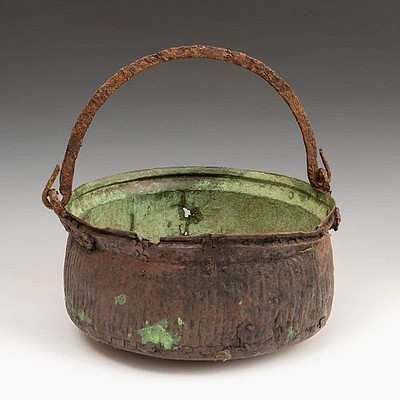Ushebti for Prince Khaemwaset. Ancient Egypt, New Empire, XIX Dynasty, Reign of Ramses II (1279-1213 BC). Fayenza. Provenance: Private collection of D
Lot 53
About Seller
Setdart Auction House
Carrer Aragó 346
Barcelona
Spain
Setdart Subastas was born in 2004 and is currently the first online art auction in Spain with solidity, prestige and reliability guaranteed by our more than 60,000 users. Setdart has a young, dynamic and enterprising team ready to successfully manage the purchase and sale of art works through custom...Read more
Estimate:
EUR€4,500 - EUR€5,000
$4,838.71 - $5,376.34
Absentee vs Live bid
Two ways to bid:
- Leave a max absentee bid and the platform will bid on your behalf up to your maximum bid during the live auction.
- Bid live during the auction and your bids will be submitted real-time to the auctioneer.
Bid Increments
| Price | Bid Increment |
|---|---|
| EUR€0 | EUR€10 |
| EUR€200 | EUR€25 |
| EUR€500 | EUR€50 |
| EUR€1,000 | EUR€100 |
| EUR€3,000 | EUR€200 |
| EUR€5,000 | EUR€500 |
| EUR€10,000 | EUR€1,000 |
| EUR€20,000 | EUR€2,000 |
| EUR€50,000 | EUR€5,000 |
About Auction
By Setdart Auction House
Dec 22, 2021
Set Reminder
2021-12-22 08:30:00
2021-12-22 08:30:00
America/New_York
Bidsquare
Bidsquare : Archaeology, Session I
https://www.bidsquare.com/auctions/setdart-auction-house/archaeology-session-i-8050
Setdart Auction House sofia@setdart.com
Setdart Auction House sofia@setdart.com
- Lot Description
Ushebti for Prince Khaemwaset. Ancient Egypt, New Empire, XIX Dynasty, Reign of Ramses II (1279-1213 BC). Fayenza. Provenance: Private collection of Dr. L. Benguerel Godó, Barcelona, acquired in London in the 1960s. Attached an expert report by the Egyptologist and architect Don Fernando Estrada Laza. Measures: 17 cm (height). Ushebti in faience for Khaemwaset (ca. 1281-1225 BC), fourth son of Pharaoh Ramses II, and the second of his Great Royal Wife, Queen Isis-Nefert. He is currently the best known of this pharaoh's sons, as his contributions to the Egyptian people have been remembered for centuries. In fact, he has been described by historians as the first Egyptologist, due to his projects of identification and restoration of historic buildings, tombs and temples. He was also an outstanding diplomat, as well as high priest of the god Ptah and governor of Memphis, as well as crown prince at the end of his life. He died in the year 55 of his father's reign, and his tomb, located in the Serapeum of Saqqara, was found by the French Egyptologist Auguste Mariette in the mid-nineteenth century. In later periods of Egyptian history, Khaemwaset was remembered as a sage and even presented as a hero in a cycle of stories from the Greco-Roman period. The ushebtis are small statuettes that were deposited in the tombs as part of the grave goods of the deceased. The oldest preserved specimens come from the Middle Empire, although we already find references to them in texts from the end of the Ancient Empire. Throughout time they always maintained the same function in the religious sphere, but, while during the Middle Empire they were conceived as the representation of their owner before Osiris in the tasks of tillage in the kingdom of the shadows, replicas of the deceased, from the New Empire onwards they came to be seen as servants or slaves of the deceased, being made in large quantities.
- Shipping Info
-
In-house shipping available. Please inquire at admin@setdart.com.
-
- Buyer's Premium



 EUR
EUR CAD
CAD AUD
AUD GBP
GBP MXN
MXN HKD
HKD CNY
CNY MYR
MYR SEK
SEK SGD
SGD CHF
CHF THB
THB













